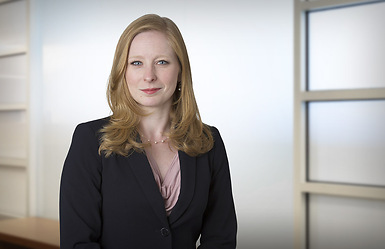While we are still waiting for Treasury to issue additional guidance on loan forgiveness terms under the Paycheck Protection Program (PPP), here is what we know now.
The amount of the PPP loan eligible for forgiveness will depend on how the borrower uses the loan proceeds during the 8-week period immediately following the borrower’s receipt of the loan. Various aspects of the forgiveness provisions in the CARES Act and the Interim Final Rule could still benefit from clarity, but to date, Treasury has provided guidance on the following:
When does the 8-week loan forgiveness period begin?
The 8-week period begins on the date the lender makes the first disbursement of the PPP loan to the borrower. The lender must make the first loan disbursement no later than 10 calendar days from the date of loan approval.
What are the conditions for forgiveness?
Based on the CARES Act and the Interim Final Rule, three factors may impact loan forgiveness:
- 75 percent payroll costs: The Interim Final Rule added that no more than 25 percent of the loan forgiveness amount can be attributable to non-payroll costs.
- Reduction in salary/wages: Reductions in employee salaries may reduce the amount of the PPP loan that is forgiven. The CARES Act provides that the amount of loan forgiveness will be reduced by the amount of any reduction in total salary or wages of any employee that exceeds 25 percent of such employee’s total salary or wages during the most recent full quarter during which the employee was employed before the covered period. The “covered period” is the 8-week period beginning on the date on which the lender makes the first disbursement of the PPP loan to the borrower. This reduction rule applies to employees who did not receive, during any single pay period during 2019, wages or salary at an annualized rate of pay in an amount more than $100,000.
- Reduction in FTE: If a borrower reduces full time employees, the forgiveness amount will be reduced to an amount determined by the following equation:
- The total forgiveness amount multiplied by:
- The average number of full-time employees of the borrower per month during the 8-week covered period divided by:
- At the borrower’s option, either the average number of full-time employees of the borrower per month between February 15, 2019, and June 30, 2019, or the average number of full-time employees of the borrower per month between January 1, 2020, and February 29, 2020; or
- If the borrower is a “seasonal employer,” as determined by the SBA, the average number of full-time employees per month between February 15, 2019, and June 30, 2019.
- Exemption for certain reductions in wages and FTE: These forgiveness reduction penalties will not apply to any reductions in full time employees or employee wages/salaries that are taken between February 15, 2020, and April 26, 2020, if the borrower rehires employees or raises salaries (or both, if the situation demands) back to their previous levels by June 30, 2020. Note, however, that the forgiveness amount may still be reduced for reductions in full time employees or salaries that occur outside that time period.
What is the maximum amount that will be forgiven?
The amount eligible for forgiveness will be the sum of the costs incurred and payments made during the 8-week covered period on:
- payroll costs,
- any interest payment on any covered mortgage obligation (not including any prepayment of or principal payment on a covered mortgage obligation),
- any payment on any covered rent obligation, and
- any covered utility payment.
While up to the full principal amount of the loan and accrued interest may be forgiven, borrowers must follow the SBA’s strict guidelines on the use of the loan proceeds to obtain full loan forgiveness. Notably, a borrower must use the full loan amount within the 8-week period, with 75 percent of that amount going towards payroll costs. Remember that the term “payroll costs” includes both cash compensation (up to an annual salary of $100,000, as prorated over the covered period) and certain other non-cash benefits (e.g., group health benefits, retirement benefits, state and local taxes on compensation, see full list as summarized in our prior article here). The remaining 25 percent of the loan forgiveness amount may consist of payments during the loan forgiveness period toward the other covered expenses noted above–mortgage interest, rent and utility expenses (which, as defined by the CARES Act, means “payment for a service for the distribution of electricity, gas, water, transportation, telephone, or internet access for which service began before February 15, 2020”). We recommend that borrowers work with their professional advisors to ensure that loan proceeds are used in a manner to maximize forgiveness during the 8-week covered period and maintain appropriate documentation evidencing their use of loan proceeds.
When can a lender request that the SBA purchase a PPP loan?
A lender may request that the SBA purchase the expected forgiveness amount of a PPP loan or pool of PPP loans at the end of week seven of the covered period. More information on this process is summarized here.




